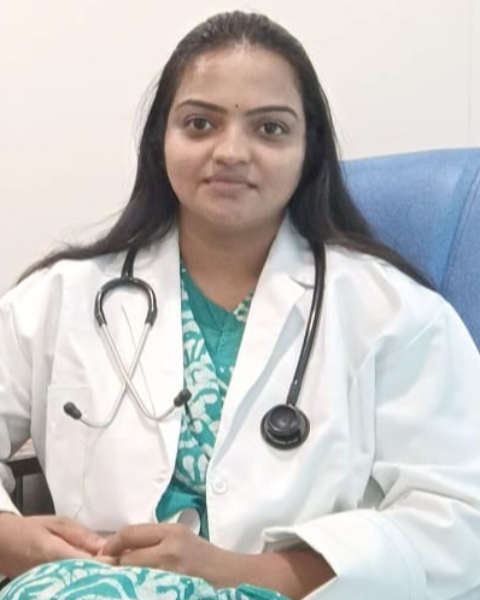SS 02 - GYN 1: Developmental Therapies and Quality Assurance in Early Phase Gynecologic Clinical Trials
108 - Acceleration of Overall Treatment Time by Mono-Application Multifractionated Brachytherapy over 48 Hours vs. Sequential Weekly Application Brachytherapy in Carcinoma Cervix - Multi-Institutional, Subc
Sunday, September 29, 2024
8:30 AM - 8:40 AM ET
Location: Room 204

Krithikaa Sekar, MD, MBBS
Healthcare Global Enterprises Ltd.
Bangalore, Karnataka
Presenter(s)
K. Sekar1, G. Lohith2, M. Bhagat3, B. K. Yadav4, A. Thakur5, A. Ansari6, V. Aditya7, V. Sonwani8, S. Nigudgi9, A. Basu10, M. Shetti11, T. Basu12, R. S. Bilimagga13, S. CT14, R. Tippeswamy15, S. Patil1, J. P. Sahu12, S. Bj16, A. Ram17, S. Suresh13, and A. K. BS13; 1HCG Hospitals, Bengaluru, karnataka, India, 2Immuno-Rad Lab , HCG Hospitals, BANGALORE, India, 3HCG Hospitals, Ahemdabad, India, 4PURBANCHAL CANCER HOSPITAL,BIRTAMODE, JHAPA, Nepal, 5PURBANCHAL CANCER HOSPITAL, JHAPA, India, 6HCG Hospitals, Ranchi, India, 7HCG, Vizag, India, 8HCG, Nagpur, India, 9hcg, gulbarga, India, 10HCG, kolkata, India, 11hcg, hubli, India, 12hcg, mumbai, India, 13Health Care Global Enterprises Ltd, Bangalore, India, 14HCG, Bangalore, India, 15hcg, Bengaluru, India, 16hcg, bangalore, India, 17hcg hospitals, bengaluru, karnataka, India
Purpose/Objective(s): Standard practice entails employing multifractionated high-dose-rate (HDR) BT, administered in 3 to 4 sessions over 3 weeks post Chemoradiation, keeping overall treatment time<56 days. Mono-application fractionated brachytherapy accelerates the treatment timeline without escalating acute or late toxicities. Recent progress in image-guided brachytherapy in cervical cancer facilitates the attainment of optimal dose volume parameters for both the target and organs at risk. This is the first multinational, multi-institutional study comparing outcomes and toxicity of mono-application fractionated brachytherapy versus multiple-application brachytherapy in carcinoma cervix. Materials/
Methods: Enrolled 401 eligible patients with confirmed cervical cancer, FIGO stages IIA-IVA, intended definitive chemoradiation. Patients post 45-50Gy external radiation with cisplatin either received mono-application fractionated brachytherapy or multiple-application for interstitial or intracavitary BT. Rectal and bladder doses were strictly maintained within 50% of prescription dose with adequate dosing to high-risk target volume. Demographic data, stage, histology, external radiation dose, brachytherapy dose and fractionation, D2cc doses to bladder, rectum were recorded. Disease free survival and overall survival at 3 years were obtained along with data on acute and long-term bladder and rectal toxicities.
Results: 401 patients, 203 received multiple applications spaced over 3 weeks and 198 received single application multiple deliveries<48 hours. All patients underwent Intracavitary or Interstitial BT with most common fractionation of 7Gyx3 or equivalent. Rectal and bladder 2cc doses were 45% +/- 12% of prescription dose. HRCTV coverage of D90 of 95+/-7 was achieved in all cases. With a median follow up of 36 months (range, 22-37), 3year disease-free was 0.78 and 0.76, The p-value of 0.98(>0.05), showed difference in DFS between the two groups was not statistically significant. The 3-year overall survival was 0.72 and 0.71, p-value of 0.1(>0.05), again statistically insignificant. Cox regression model analysis showed stage wise DFS and OS difference between the groups weren’t statistically significant, hence proving the non-inferiority. 3 year Grade 2 or more bladder and rectal toxicity has been reported in 2.3% and 4.1 % in mono application group and 2.9% and 6.3 % of multi-application group, statistically insignificant, confirming the credibility of our approach.
Conclusion: Our study lays the foundation for a comprehensive investigation into the outcomes and efficacy of mono-application fractionated brachytherapy being non inferior to multiple-application with respect to outcomes and toxicity, providing valuable insights into the management of cervical cancer with reduced overall treatment time and superior resource management. Strict constraints to OARs and accuracy of image guided brachytherapy techniques, long term toxicity could be minimized.
Purpose/Objective(s): Standard practice entails employing multifractionated high-dose-rate (HDR) BT, administered in 3 to 4 sessions over 3 weeks post Chemoradiation, keeping overall treatment time<56 days. Mono-application fractionated brachytherapy accelerates the treatment timeline without escalating acute or late toxicities. Recent progress in image-guided brachytherapy in cervical cancer facilitates the attainment of optimal dose volume parameters for both the target and organs at risk. This is the first multinational, multi-institutional study comparing outcomes and toxicity of mono-application fractionated brachytherapy versus multiple-application brachytherapy in carcinoma cervix. Materials/
Methods: Enrolled 401 eligible patients with confirmed cervical cancer, FIGO stages IIA-IVA, intended definitive chemoradiation. Patients post 45-50Gy external radiation with cisplatin either received mono-application fractionated brachytherapy or multiple-application for interstitial or intracavitary BT. Rectal and bladder doses were strictly maintained within 50% of prescription dose with adequate dosing to high-risk target volume. Demographic data, stage, histology, external radiation dose, brachytherapy dose and fractionation, D2cc doses to bladder, rectum were recorded. Disease free survival and overall survival at 3 years were obtained along with data on acute and long-term bladder and rectal toxicities.
Results: 401 patients, 203 received multiple applications spaced over 3 weeks and 198 received single application multiple deliveries<48 hours. All patients underwent Intracavitary or Interstitial BT with most common fractionation of 7Gyx3 or equivalent. Rectal and bladder 2cc doses were 45% +/- 12% of prescription dose. HRCTV coverage of D90 of 95+/-7 was achieved in all cases. With a median follow up of 36 months (range, 22-37), 3year disease-free was 0.78 and 0.76, The p-value of 0.98(>0.05), showed difference in DFS between the two groups was not statistically significant. The 3-year overall survival was 0.72 and 0.71, p-value of 0.1(>0.05), again statistically insignificant. Cox regression model analysis showed stage wise DFS and OS difference between the groups weren’t statistically significant, hence proving the non-inferiority. 3 year Grade 2 or more bladder and rectal toxicity has been reported in 2.3% and 4.1 % in mono application group and 2.9% and 6.3 % of multi-application group, statistically insignificant, confirming the credibility of our approach.
Conclusion: Our study lays the foundation for a comprehensive investigation into the outcomes and efficacy of mono-application fractionated brachytherapy being non inferior to multiple-application with respect to outcomes and toxicity, providing valuable insights into the management of cervical cancer with reduced overall treatment time and superior resource management. Strict constraints to OARs and accuracy of image guided brachytherapy techniques, long term toxicity could be minimized.
